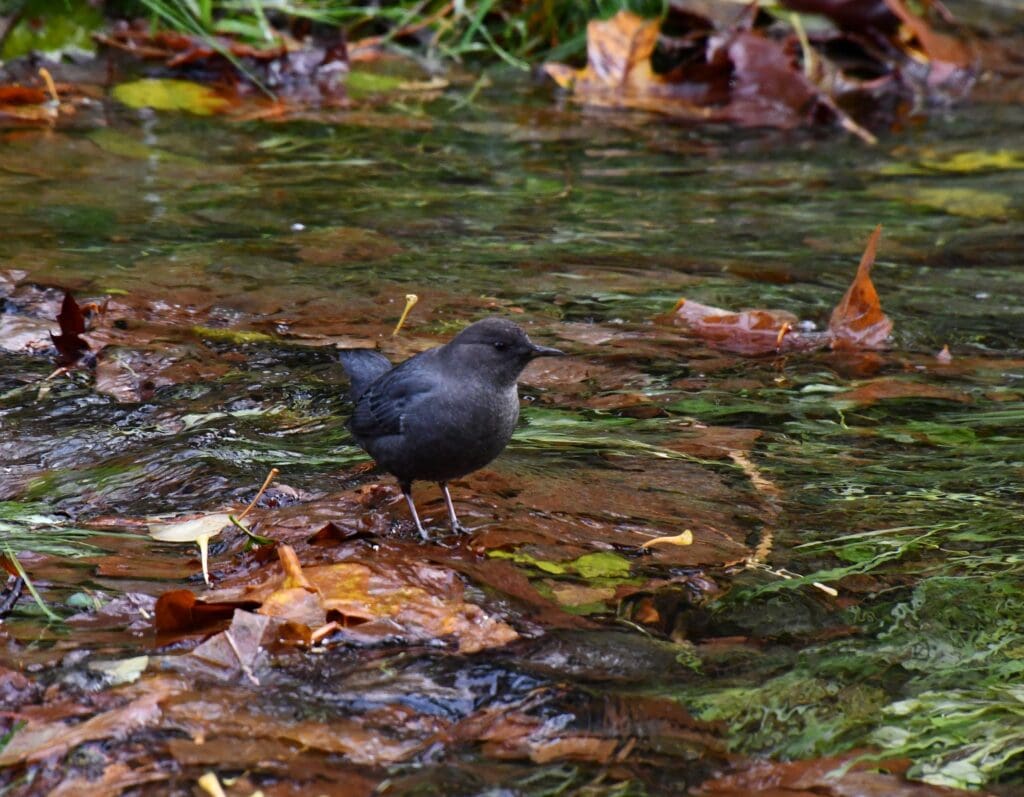When you picture a diving bird, you probably imagine something like a gannet, or even a penguin; seabirds with bodies streamlined for disappearing under the waves and catching ocean fish. If you’re not already familiar, you may be surprised to learn that North America is home to a unique “diving” bird that defies all the typical traits of one these majestic ocean divers. For one thing, it’s a songbird!
The American Dipper is North America’s only semiaquatic songbird. It is found throughout the western half of the United States from as far north as Alaska, stretching all the way down south to sections of Central America. Although they are mostly found in high mountains near running water, when the conditions are met for the American Dipper to thrive, these strange little songbirds can be surprisingly common.
Related Article: Light Pollution May Be Causing Songbirds’ Eyes to Shrink
Fun Facts About the American Dipper
The American Dipper is a truly one-of-a-kind bird. Without further ado, let’s “dive” into some unique dipper facts!
Walking under water: The American Dipper is skilled at diving under rushing streams. Capable of both diving and swimming, the behavior that surprises people most is that American Dippers actually walk underwater! They may even spend long enough beneath the surface to overturn stones and pebbles in search of food!
Built for the cold: Mountain streams can be icy cold, especially in the winter. The American dipper accounts for this with a thick coat of feathers — even on its eyelids! In addition, the American dipper’s blood carries extra oxygen and its metabolism slows down, allowing it to make the most of its body’s energy during the colder months.
Pollution warning: While American Dippers remain common in areas that meet their specific needs, they do tend to decline when a region’s high mountain waterways can no longer support them. This often happens when streams become polluted. In this way, the presence — or absence — of a thriving American Dipper population can tell us a lot about the health of the local streams and rivers.
Waterproof: Sure, American Dippers are adapted to the cold, but can they really withstand diving underwater for their food? Yes! Thanks to their waterproof feathers, American Dippers are perfectly adapted to the semiaquatic lifestyle. In fact, they even have a nasal flap that closes their nostrils and prevents water from entering when they dive, much like the ocean-faring gannet! They also have a second set of eyelids called “nictitating membranes” that help them see underwater.
The Future of the American Dipper
The American Dipper is considered to be of “least concern” with regards to population stability. They prefer remote regions and will not likely be found in your average backyard, but within their preferred habitats these birds are quite stable. Despite this, pockets of decline can be very telling indicators of the declining quality of local waterways. In this role, minute changes in American Dipper population density can be vital early warning signs of habitat degradation on the whole.
Popular Article: Could Timing Be the Key to Reducing Bird Wind Turbine Fatalities?

